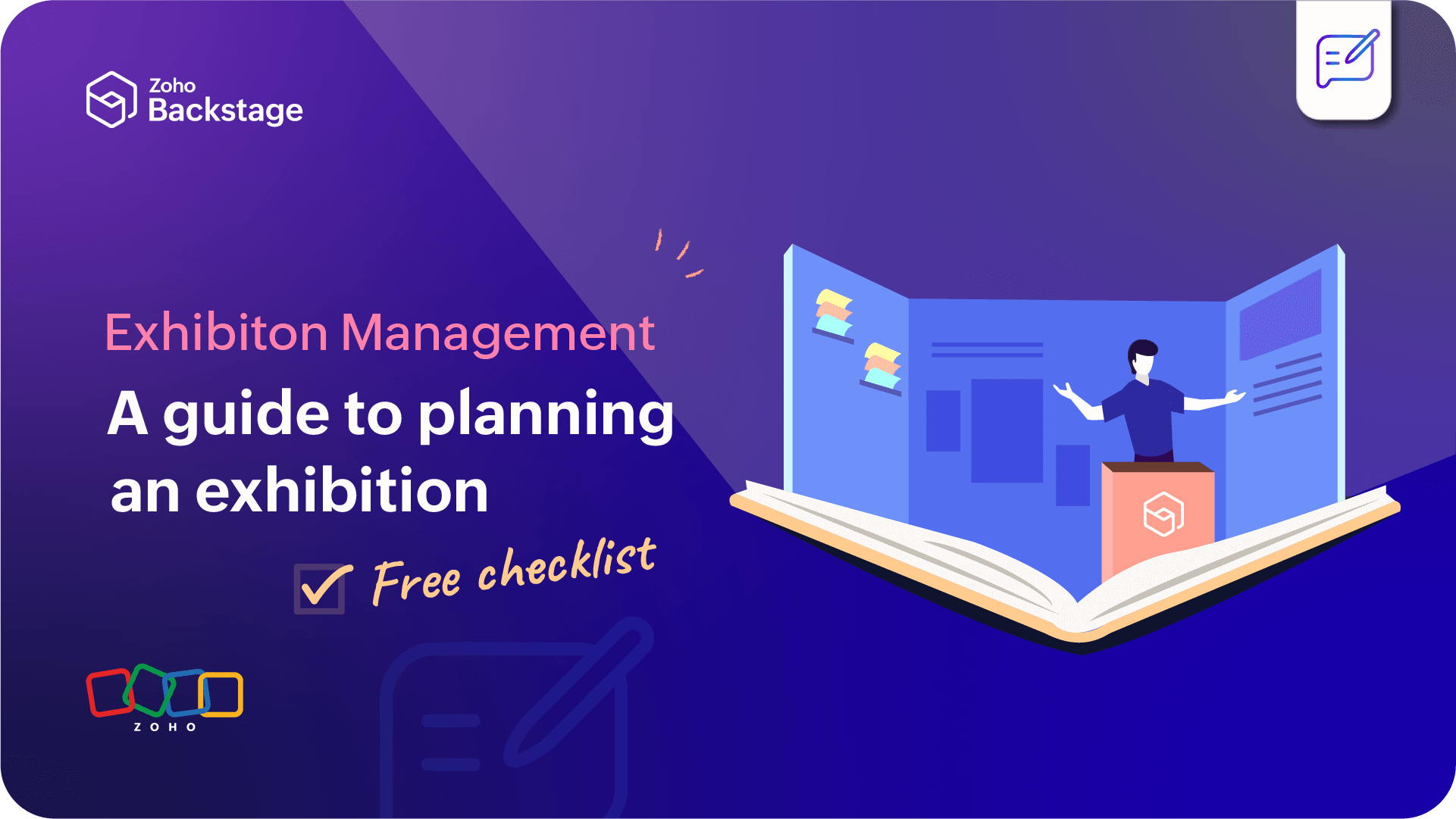- HOME
- Management
- The 5 biggest hybrid event challenges (and how to overcome them)
The 5 biggest hybrid event challenges (and how to overcome them)
- Last Updated : August 18, 2023
- 1.8K Views
- 6 Min Read

For almost a year now, we’ve been talking about how hybrid events are the future, and now, finally, that time has arrived. A lot of event organizers have started hosting hybrid events in the last few months, and many more are planning to host them through 2021 and beyond.
Previously, we explored why event organizers should include hybrid events in their post-COVID-19 event strategy and the mistakes people make when hosting hybrid events. This time around, we’re going to talk about five of the major challenges event professionals face when going hybrid. Let’s dive right in.
Connecting in-person and virtual attendees
Networking is one of the main reasons people attend events. Yet, with virtual events, getting interaction and networking were some of the biggest problems most event organizers faced. While event apps, virtual networking rooms, and AI-powered matchmaking helped to some extent, they were nowhere near as effective as in-person networking. So much so that when in-person events started making a comeback in the last few months, most attendees preferred chatting with attendees to attending sessions. With hybrid events, in-person attendees will always have the inherent edge when it comes to networking. It’s your job to ensure your virtual attendees don’t feel left out.

Some things you can do are opening up the networking rooms a few days prior to the event so all your attendees can participate virtually, as well as creating a networking room onsite—complete with laptops, headphones, and tables—where in-person attendees can connect with virtual attendees via icebreaker games like speed networking. Another option is adding gamification elements to networking—like virtual networking bingo or allocating points for completing each task and giving prizes to attendees who top your leaderboard.
Subscribe to The Green Room
Sign up here and get all the most relevant MICE industry content delivered right to your inbox once a month.
By submitting this form, you agree to the processing of personal data according to our Privacy policy.
Confusion around hybrid event models
At its most basic, a hybrid event can be defined as one that links people online and onsite. But when you add in-person and online sponsors, speakers, and attendees to the mix, things get a lot more complicated. Are you going to stick to just virtual attendees or will you also allow speakers to present virtually and give sponsors an option to partner with the virtual aspect of your event? If you’re going with the latter, how do you create an event that gives everyone access to everyone?
One hybrid event model that’s being talked about a lot is the Hub and Spoke model, where you have one main venue and smaller regional venues connected to it. This model brings with it a whole new set of logistical and management challenges. For example, the PCMA’s annual Convening Leaders conference had one main (or hub) venue in Singapore with an in-person audience of 300 and spoke (regional) venues in six cities in the USA, each with around 50 to 150 in-person attendees. Apart from this, 3000 people from all over the world joined virtually.
Other hybrid event models include the Network or Multiple Hubs model where a bunch of onsite events happen at the same time at various venues that are connected virtually—like Junction 2020, a hackathon that happened simultaneously in 30 countries. Some hybrid events even have a longer virtual event with activities to include attendees in various time zones with a shorter in-person event in between. For example, at Event Tech Live 2021, the virtual event runs from November 1 to 5 with the physical event happening only on November 3 and 4.
With so many hybrid event models around and new ones popping up every few weeks, we suggest you spend some time studying other hybrid events—attend a couple of them, talk to other event organizers, or even hire a hybrid event production agency to help you with the works. The more you learn about hybrid events, the easier it’ll be for you to figure out what works for yours.
Event content
The challenge doesn’t just end with deciding your hybrid event model. The next step is setting an agenda that gives all your attendees—whether in-person or virtual, whether at the main venue or one of the regional ones—a valuable experience with none of them feeling left out. Some questions that event planners have are:
What activities should be conducted onsite and online?
Should you have virtual speakers, pre-recorded content, or “simulive” sessions (where the session is recorded but the speaker is available live to take questions)?
What onsite activities should be hybrid so everyone can participate?
What activities should be specific to only onsite or online attendees?
Should you host your online and onsite experiences at the same time or spread them across the week?
These same questions apply to other hybrid event models too. For the Hub and Spoke model, you’ll have to plan an experience that takes your main, regional, and online attendees into consideration. For the Multiple Hubs model, it means balancing onsite activities at each hub with online activities to connect members in all the hubs.
Here again, it’ll benefit you to study other hybrid events and learn from them. You can also run a poll asking attendees at previous events what they’d prefer so you know where their interests lie. Lastly, be sure to rehearse your event and give speakers enough time to get used to your event technology and practice speaking to a hybrid audience.
Event technology
Did you know there are currently over 800 event tech platforms in the market today, a 400% increase from early 2020? And while a lot of them are marketed as all-in-one event management software, most don’t cover end-to-end event management. This means event planners are spoiled for choice. At the same time, it also makes it difficult to choose one that best fits your event’s needs. Before you explore the products available on the market, it’s best to make a list of the features critical to the success of your event. This includes the must-haves like:
Live-streaming from the venue
Hybrid networking options
Analytics
Website builder
Ticketing
Marketing
Check-in and badging
Apart from this, here are a set of nice-to-have features that, though not necessary, can elevate your event experience. These are:
Gamification
Social streaming
Audio-only networking
Floor map and navigation
AI-powered matchmaking
Once you decide on the features you require and your event tech budget, you can then talk to event software vendors, attend demos, and choose your platform. Apart from features, you can also test the software for user experience and accessibility as your audience will be spending a lot of time on the platform. After all, this is your event’s online venue.
Event venue
A large part of your event’s success depends on the venue (or venues) you’ve chosen. They should be suited to run both your onsite and online experiences. And choosing the right venue, one with hybrid event capabilities, can get tricky as most venues are new to hybrid experiences too.
For one, this means an internet connection with strong bandwidth to stream your onsite sessions to virtual attendees and good WiFi that allows onsite attendees to use their event apps without any connectivity problems. Some venues also have a studio where you can pre-record sessions or livestream them to your virtual audience. Other facilities that can support your hybrid event are:
Quiet spaces or one-on-one booths where onsite attendees can connect with online attendees. You can even use something like Nook’s event pods to create these spaces.
A/V gear like cameras, tripods, microphones, studio backdrops, and more to help you broadcast sessions seamlessly.
Options to set up session halls for virtual participation so online attendees feel included in onsite sessions.
Some venues have also partnered with hybrid event technology platforms, A/V experts, production companies, and telecommunication companies to meet the current needs of event organizers.
Finally, make sure you budget for the extra cost associated with hybrid events—A/V equipment, microphones, cameras, and more. Also, while on paper hybrid events address most of our problems and provide unique opportunities for connecting, they’re still unexplored territory. So take small steps, set aside some funds for unexpected emergencies, and have a contingency plan ready.
If, like us, you're more of a social person, let's connect on Twitter (@ZohoBackstage) and we'll keep you up-to-date with all the latest event news.
 Nisha
NishaMarketing and content at Zoho Backstage. Cultural misfit. Armchair traveler. Productivity geek. Sometimes, I write poetry. Sometimes, it rhymes.








